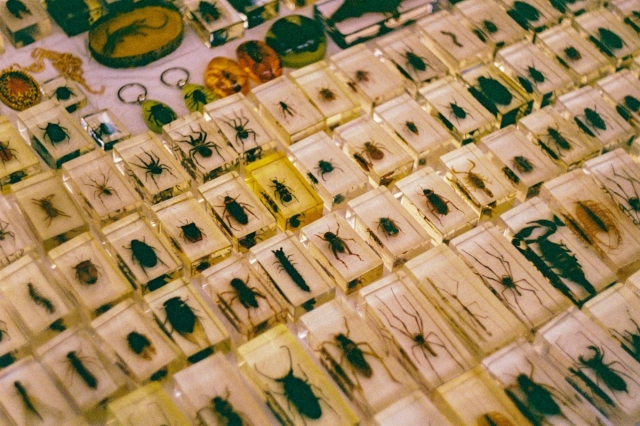Like humans, pests, too, respond to seasonal transitions, though not as visibly. As the temperature changes, many pests adjust their behavior, nesting spots, and feeding habits. This often brings them closer to your home or even inside it.
Consider bed bugs, which are attracted to carbon dioxide and warmth. Thus, in the summer months when your bodies are hotter due to external temperatures, bed bugs might get inside your house.
In such scenarios, pest control for specific bugs becomes a routine part of your house maintenance checklist. You can look for a pest control service for bed bugs if struggling with these unwanted residents. However, it is also important to ensure pest control doesn't rely on traditional methods.
Traditionally, pest control was done with harsh chemicals. According to ZeroBugs, many service providers now offer safer alternatives. These are designed to be safe for people, pets, and the environment.
As the weather changes, your home becomes vulnerable to a variety of other pests. Therefore, it's a good idea to understand what to expect with each season so you can take steps to prevent unwelcome visitors.
Spring: New Life, New Pests
As temperatures rise and flowers bloom, pest activity tends to increase. Ants begin searching for food and water. Termites swarm in search of new nesting spots. Wasps and bees start building new colonies. Spring moisture also brings out insects like centipedes, spiders, and roaches that thrive in damp conditions.
Rodents that may have nested indoors during winter begin to venture outside, but that doesn't always mean they leave completely. Many stay close to the house where they previously found food and warmth.
It's also a season when breeding begins for many pests, so small issues can quickly escalate into larger problems if not addressed early.
Some of the most common spring pests listed by The Spruce are ants, termites, stinging insects, rodents, and cockroaches. You can keep your house pest-free by:
- Sealing off entry points
- Calling a pest controller
- Storing and cleaning off food properly
- Removing standing water
According to a ScienceDirect study, removing autumn leaves can also be useful in reducing the emergence of insects in spring. The study highlighted that this practice reduced the abundance of arthropods by 17%. Similarly, it reduced the abundance of Lepidoptera species by 45%.
Summer: Peak Insect Activity
Warm temperatures and longer days mean that pests have more time and energy to feed, breed, and explore. Mosquitoes, flies, fleas, and ticks are especially active in summer. Open doors, food left out during barbecues, and poorly sealed windows make it easier for pests to enter your home.
Carpenter ants and termites are often busy damaging wooden structures, while wasps may become aggressive in defending their growing nests. You may also notice more spiders, not just because they're out more, but because they're feeding on the other insects that are now thriving.
Regular inspections and home maintenance become especially important during this time.
According to Love Property, some other pests you may encounter during this season include flying ants, maybugs, bed bugs, hornets, and ground beetles.
Some of these pests may not pose a significant health risk, but they can still be detrimental to plants and your backyard.
For instance, Good Housekeeping states that maybugs, also called cockchafers, June bugs, or doodlebugs, do not pose any harm to your health. They can't even kill off a plant unless it's a significant infestation. However, they can impact the appearance of plants, affecting your backyard's curb appeal.
Fall: Seeking Shelter
As temperatures begin to cool, pests start preparing for the colder months. Rodents, in particular, look for shelter indoors. They squeeze through tiny openings in search of food and warmth, often nesting in attics, basements, or behind appliances.
Stink bugs, boxelder bugs, and ladybugs may gather on sunny sides of homes, eventually slipping inside through cracks and vents. Cockroaches and spiders may become more visible, too, especially in garages and bathrooms. This is a good time to seal up potential entry points and reduce clutter that could offer hiding spots.
According to The Spruce, some other fall pests you can find are:
- Centipedes
- Silverfish
- Spider beetles
- Fleas
- Spiders
Winter: Quiet But Not Inactive
Winter often gives the impression that pest problems fade away, but that's not entirely true. Many insects die off or go dormant, but some pests become even more of a problem indoors. Mice, rats, and cockroaches are three examples of pests that stay active during colder months.
Bed bugs, in particular, don't rely on the outdoors to thrive. They live in warm environments and feed on blood, which makes heated homes ideal hiding places.
With windows closed and travel still common around holidays, infestations can become more noticeable in winter. Regular cleaning, vacuuming, and targeted treatment can help manage issues during this quieter season.
Frequently Asked Questions
Do indoor plants attract pests during seasonal changes?
Yes, indoor plants can attract pests, especially during warmer seasons when conditions like moisture and heat are more favorable. Common plant pests include fungus gnats, aphids, spider mites, and whiteflies. Overwatering and poor air circulation can create ideal breeding grounds.
Does humidity inside the home impact pest activity?
Indoor humidity has a direct effect on pest activity. Many insects, like silverfish, cockroaches, and centipedes, thrive in damp areas. Bathrooms, kitchens, and basements are especially vulnerable. Using dehumidifiers, fixing plumbing leaks, and improving ventilation can help control moisture levels and create an environment that's less inviting to pests.
Should I change my pest control approach with the seasons?
Adjusting your pest control strategy based on the season is often more effective than a single approach year-round. For example, focusing on ants and flying insects in spring and summer, and rodent-proofing in fall. In winter, indoor inspections and preventative care help catch hidden issues.
Seasonal shifts can bring beauty and change, but they also influence the behavior of pests. Understanding what to expect throughout the year helps you stay prepared and reduce the risk of infestations. A consistent approach to home maintenance, combined with professional help when needed, goes a long way in keeping pests under control.
Whether it's spring ants or fall rodents, knowing what's active and when can help you keep your home protected all year long.






